 "user314" (user314)
"user314" (user314)
08/12/2020 at 11:00 • Filed to: flightline, Planelopnik, planelopnik history, nasa, USAF
 2
2
 12
12
 "user314" (user314)
"user314" (user314)
08/12/2020 at 11:00 • Filed to: flightline, Planelopnik, planelopnik history, nasa, USAF |  2 2
|  12 12 |
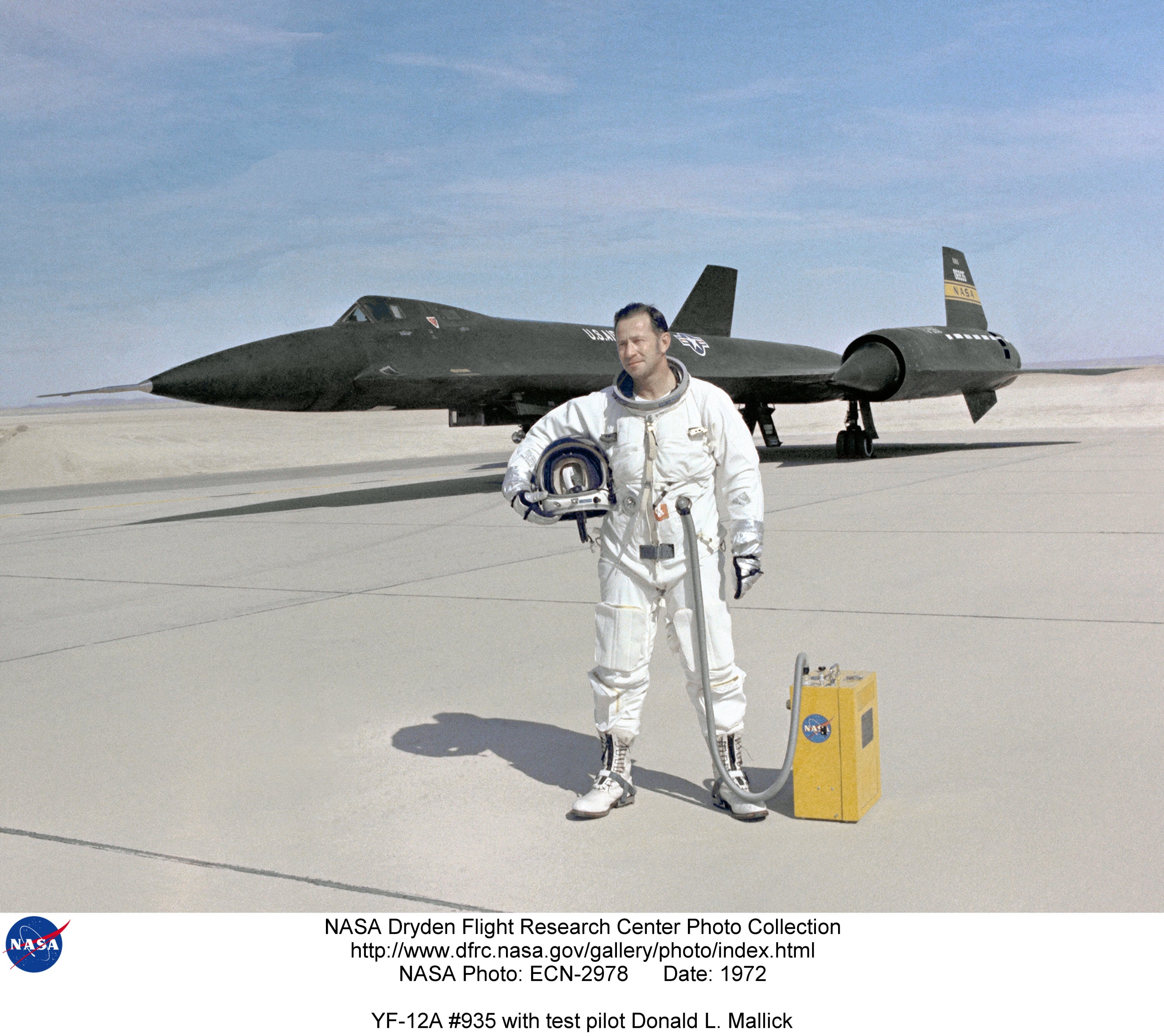
NASA Dryden FRC, 1972.
Beginning in 1955, the USAF began seeking proposals under the !!!error: Indecipherable SUB-paragraph formatting!!! to replace the F-102 and F-106. The specifications called for included a ceiling above FL60, a speed in excess of Mach 1.7, a range of 1,000 miles, a crew of two, at least two engines, and an integrated fire control system allowing interception of targets 60nmi from the plane. Northrop, Lockheed and North American all put forward designs, but none had advanced very far when the program was terminated in 1956. LRI-X was reinstated in 1957, with North American’s design, which shared the !!!error: Indecipherable SUB-paragraph formatting!!! and escape capsule from the company’s !!!error: Indecipherable SUB-paragraph formatting!!! design , was designated the F-108. North American got as far as construction of a full-scale mockup of the XF-108, given the nickname ‘Rapier’, before the program was cancelled again in 1959. NA continued refining the design elements however, which eventually saw success in the !!!error: Indecipherable SUB-paragraph formatting!!! bomber for the Navy.
Other work for the F-108 also continued, with Hughes working on its !!!error: Indecipherable SUB-paragraph formatting!!! radar, the first !!!error: Indecipherable SUB-paragraph formatting!!! unit in the US, a paired !!!error: Indecipherable SUB-paragraph formatting!!! (IRST), and the !!!error: Indecipherable SUB-paragraph formatting!!! (later AIM-47) missile. This work was leveraged by Lockheed, which was proposing an armed interceptor variant of the A-12 Cygnus it was developing for the CIA. The AF-12, as it was then known, added a second crew member to monitor and operate the fire control system, the radar and IRST for the AN/ASG-18, and three AIM-47 missiles. Adding the radar and IRST involved cutting back the chines along the nose, which required adding stationary fins under the engine nacelles and a folding fin under the belly.
The three interceptors, now designated YF-12A, were allocated the seventh, eighth and ninth slots (s/n !!!error: Indecipherable SUB-paragraph formatting!!! , !!!error: Indecipherable SUB-paragraph formatting!!! and !!!error: Indecipherable SUB-paragraph formatting!!! ) in the A-12 production line, and construction commenced.

One of the YF-12s, hidden behind a security screen from the already secret A-12 production floor
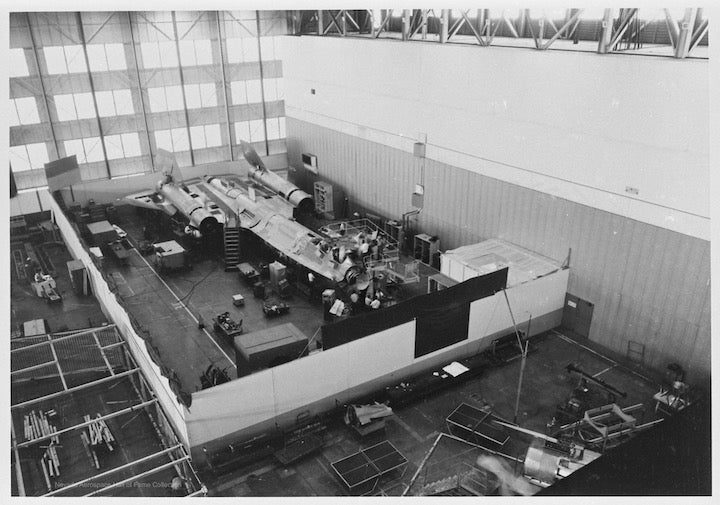
Another angle of the YF-12 under construction
The first flight of the YF-12 was on 8/7/1963, with LBJ revealing the existence of the program, called KEDLOCK, to the public the next year to disguise the parallel A-12 test program.
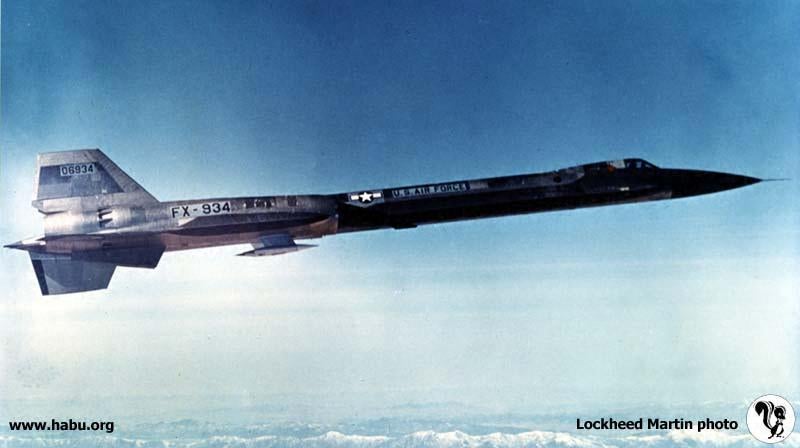
The first image released of an A-12/M-21/YF-12/SR-71 aircraft. Note the folding ventral fin under the center-line and spike-shaped cameras under the nacelles
The USAF test program continued until 1967, resulting in an altitude record of 80,257.86 feet and three separate speed records on May 1st, 1965: 2,070.102 mph on a 15/25 straight course, 1,643.042 mph on a 500km closed course, and 1,688.891 mph on a 1,000 km closed course. Afterwards, -936 would wear three Blackbird silhouettes under the cockpit.
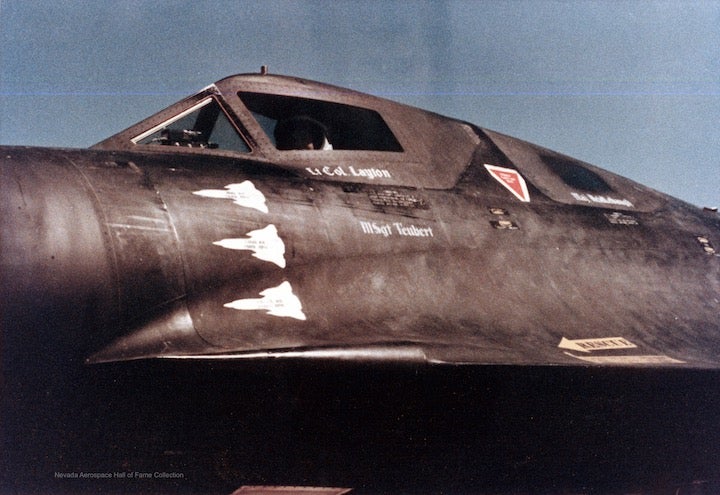
Six out of seven tests of the AIM-47 were successful, with the last being launched from 74,000 feet and striking a
!!!error: Indecipherable SUB-paragraph formatting!!!
drone flying at 500 feet. removing a 4-foot section of the tail. It was during one of those flights that Kelly Johnson flew in the RSO seat of a YF-12, his second Oxart/Blackbird flight.
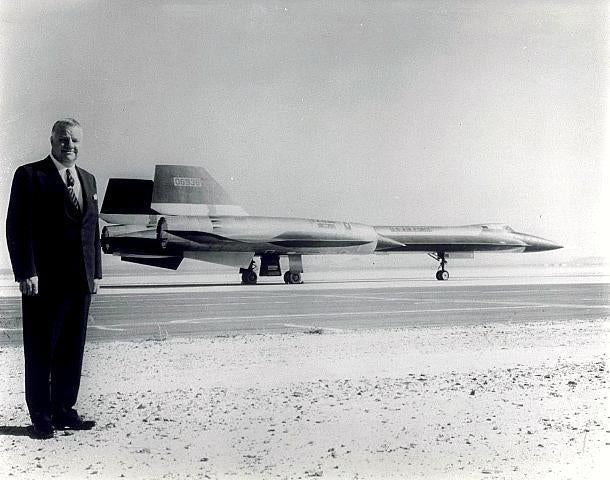
Kelley Johnson with YF-12 60-6935
Lockheed further refined the F-12 in preparation for production, building a mockup of the forward section showing a partial chine on the radome, along with the IRST integrated into the chine on the fuselage.
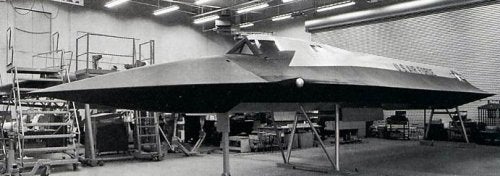
Mockup of the F-12B forward fuselage
These changes removed the need for the folding fin, though the fixed fins under the nacelles remained. The USAF tendered an order of 93 (some sources say 96) F-12Bs for the Air Defense Command. Despite these successes, the YF-12 program was canceled in 1967 by Robert McNamara in favor of Convair’s !!!error: Indecipherable SUB-paragraph formatting!!! project, which never materialized, and also due to increasing costs of the Vietnam War. Hughes continued work on the radar and AIM-47, which later were upgraded into the !!!error: Indecipherable SUB-paragraph formatting!!! and !!!error: Indecipherable SUB-paragraph formatting!!! , intended for the !!!error: Indecipherable SUB-paragraph formatting!!! and used in the !!!error: Indecipherable SUB-paragraph formatting!!! .
The YF-12s were handed over to NASA for testing, which included an improved computer control system for the engine bypass system, which virtually eliminated unstarts (the ejection of the supersonic shockwave from the inlet, which resulted in wild changes in aircraft attitude) on the A-12 and SR-71 series, and the Cooperative Airframe-Propulsion Control System (CAPS), which reduced slight deflections in the aircraft’s direction, which at Mach 3 could result in deviations of thousands of feet. Another test required painting a white cross on the underside of 60-6936, which allowed ground cameras to track the plane with high precision.

Another experiment was !!!error: Indecipherable SUB-paragraph formatting!!! (sometimes parsed as “Cold Wall”), which involved mounting a large cylinder under the fuselage, chilled with liquid nitrogen and covered by an insulating jacket.

The Coldwall experiment mounted under a YF-12. Love the shark mouth.
At altitude and Mach 3, the jacket would be blown away by primacord, exposing the cylinder to a high heat and pressure environment. Data was then collected about temperature and air pressure changes, which could be compared to theoretical and wind tunnel data, all of which greatly improved knowledge of fluid dynamics.
Two of the three YF-12s were lost in accidents, with 60-6934 falling victim to overheating in 1966. The crew were able to escape, but the internal damage was judged to be too severe to be repaired. The aft fuselage was later mated to a ground test unit to form the SR-71C trainer after the second SR-71B was lost. 60-6936 was destroyed in 1971 after a fire broke out on the left engine on approach to Edwards. As before, the crew escaped, but the plane was written-off. A leak in the left engine nearly destroyed 60-6935 as well, after ground crew noted a contrail of escaping JP-7 behind the plane. The pilot was able to land the plane, and the crew scrambled out, jumping on to the roof of the base commander’s car, and in the process the pilot punched holes into the chine with the spurs (used to lock into the ejection seat) on the back of his boots. The holes were patched and the fuel line replaced, and the plane later placed into storage for a time.
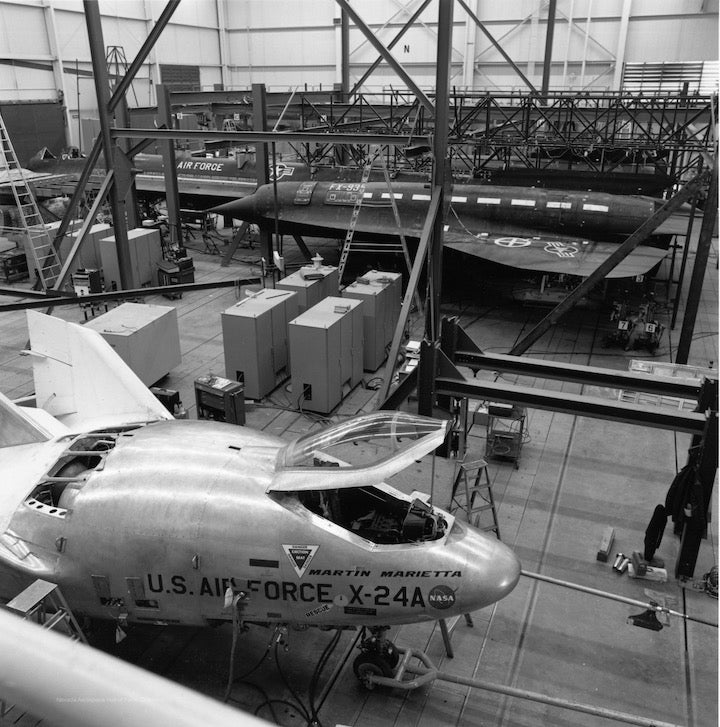
YF-12 606935 along side the X-24A
60-6935 was flown to the USAF Museum in Dayton on November 7th, 1979, and is now on display.
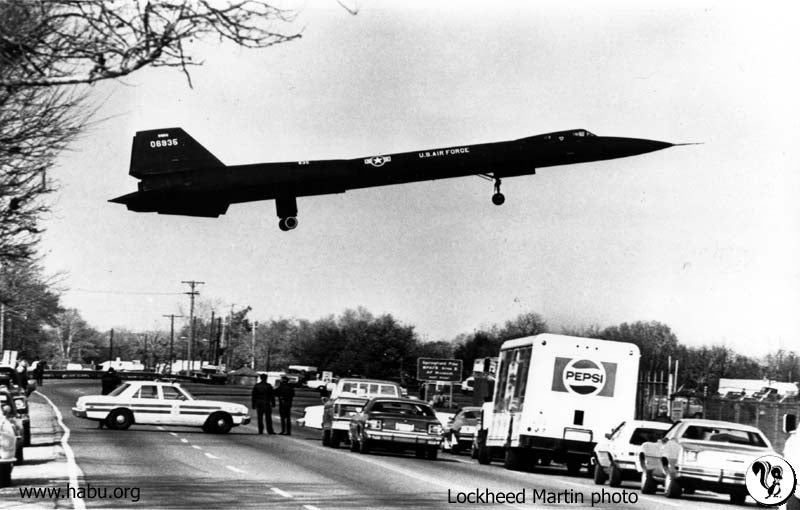
Landing at Wright-Patterson AFB.
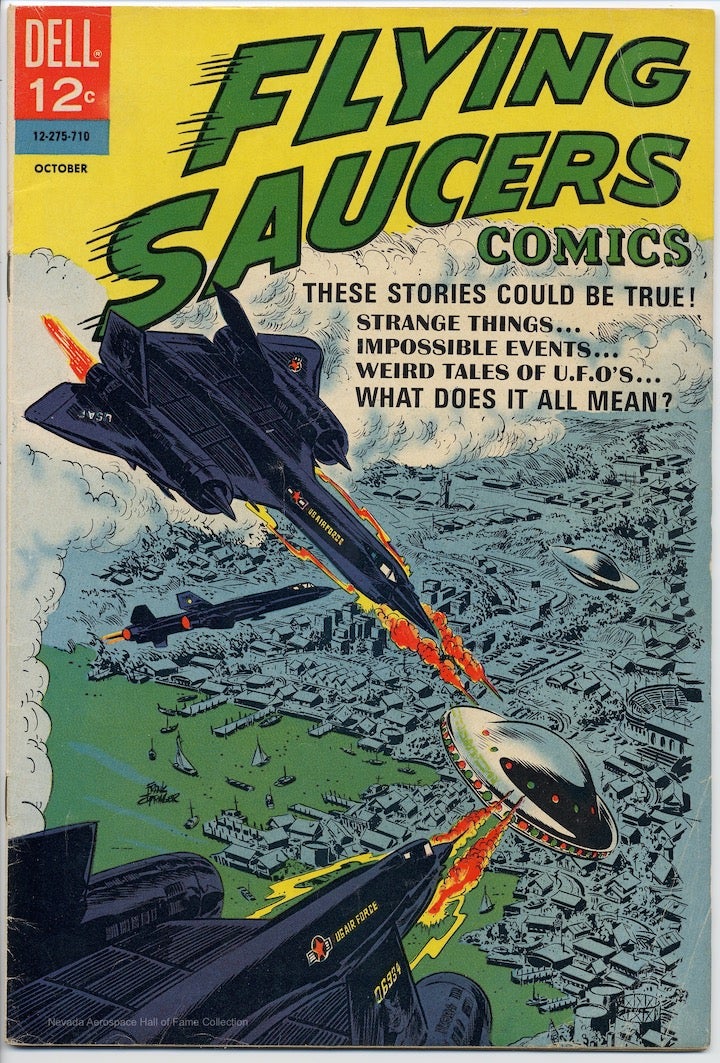
PEW PEW PEW!
 ttyymmnn
> user314
ttyymmnn
> user314
08/12/2020 at 11:07 |
|
Does anybody know how fast the SR-71 flies? Has anybody ever done a ground speed check? I’m asking for a friend.
 Merkin Muffley
> ttyymmnn
Merkin Muffley
> ttyymmnn
08/12/2020 at 11:15 |
|
Walter!
 facw
> user314
facw
> user314
08/12/2020 at 11:17 |
|
Of course planned for the YF-12 was the AIM-47 missile:
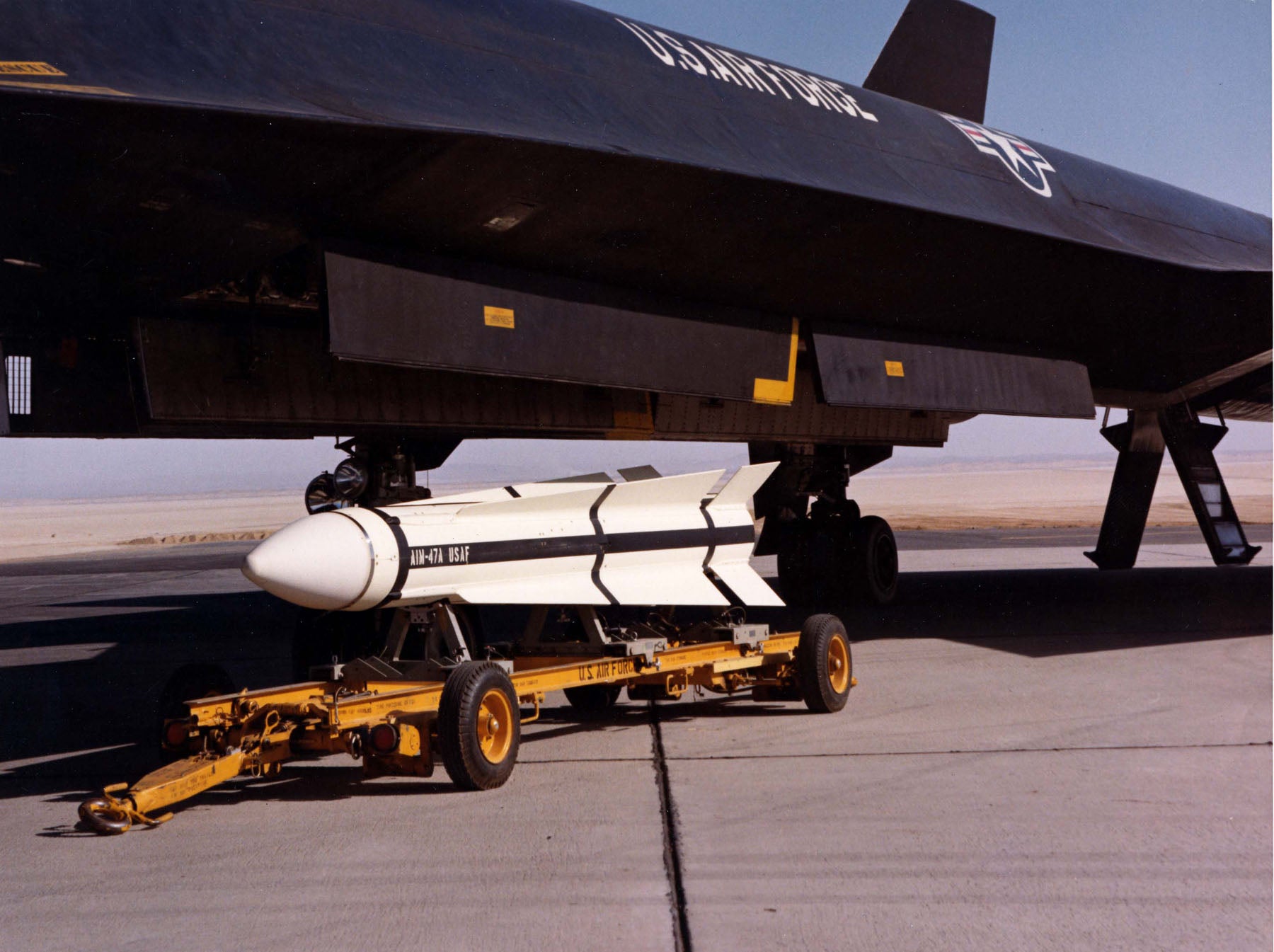
The YF-12 could carry three (the 4th bay was reserved for avionics to support the missiles, though presumably they would have found a place to shoehorn those in elsewhere in a production aircraft). Either way, three or four missiles wasn’t a lot of fire power to take on great fleets of incoming Soviet bombers, so the AIM-47 was also designed to a quarter kiloton tactical nuclear warhead, which would really wreck the day of any Russians dumb enough to try WWII-style massed bomber formations.
 ClassicDatsunDebate
> ttyymmnn
ClassicDatsunDebate
> ttyymmnn
08/12/2020 at 11:32 |
|
Someone should append a YF-12 pilot speedchecking after the SR-71 to that story.
 user314
> ClassicDatsunDebate
user314
> ClassicDatsunDebate
08/12/2020 at 11:35 |
|
An A-12 should ask after the SR-71, since the Cygnus/Oxcart was slightly faster.
 user314
> facw
user314
> facw
08/12/2020 at 11:36 |
|
The US DOD was pretty much “Add nuclear warheads to all the missiles!” from ‘45 through the 1960s.
 ttyymmnn
> facw
ttyymmnn
> facw
08/12/2020 at 11:36 |
|
I find the overlap of strategic doctrines to be quite fascinating.
 ClassicDatsunDebate
> user314
ClassicDatsunDebate
> user314
08/12/2020 at 11:42 |
|
I read the paragraph about the three seperate speed records and the Blackbird silhouettes and was going with that.
 Rusty Vandura - www.tinyurl.com/keepoppo
> ttyymmnn
Rusty Vandura - www.tinyurl.com/keepoppo
> ttyymmnn
08/12/2020 at 12:48 |
|
Faster than an F-16, I’ve been told.
You would probably enjoy watching The Andromeda Strain, 1971. It’s a bit cornball because 1971, but in all, I’d say it’s very good. A few nice flying sequences in there as well. Really, a quite good movie. Next up are Silent Running and The Omega Man . I’ve seen Silent several times. Omega I only saw once, and not all of it, probably around 1980. Alas, likely because COVID, all three of these titles I have to pay Amazon to rent. :(
 WasGTIthenGTOthenNOVAnowbacktoGTI
> ttyymmnn
WasGTIthenGTOthenNOVAnowbacktoGTI
> ttyymmnn
08/12/2020 at 13:41 |
|
General: “How many of these nukes will it take to destroy the world?”
Engineer: “2"
General: “OK , then put 3 on.”
 user314
> WasGTIthenGTOthenNOVAnowbacktoGTI
user314
> WasGTIthenGTOthenNOVAnowbacktoGTI
08/12/2020 at 14:25 |
|
Post-WWII strategic thinking:

 WasGTIthenGTOthenNOVAnowbacktoGTI
> user314
WasGTIthenGTOthenNOVAnowbacktoGTI
> user314
08/12/2020 at 15:49 |
|
Looks like Donny’s desk in the oval office.
Heyoooooo!